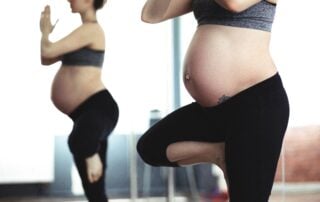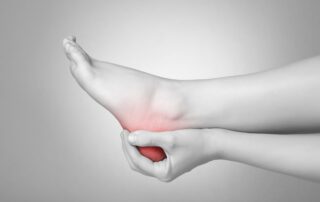
In Central New York, Spring and summer are some of the best times of the year. When we have clear skies and the sun is finally shining, we are all chomping at the bit to get outside and spruce things up in the outdoor spaces that we are spending more time in.
Many months of the year we are not able to get out in the yard and move around a lot, exercise level decreases and our bodies are not used to doing a lot of movement and especially some of the heavy lifting and demanding work that needs to be done in the yard. This being said, when people venture outside to do yard work for the first time in months their injury rate increases. Rotator cuff strains, disc bulges in the neck and low back, and knee injuries are some of the most common injuries. It is important to be aware of these possibilities and remember some key points as you perform these tasks outside so you can limit the chances of these happening to you.
Tip #1:
Wear good and supportive footwear when in the yard or on uneven surfaces. Be aware of obstacles in the yard or at home when moving quickly.
Tip #2:
Make sure your back is flat and you are bending at the hips and knees when lifting things from the ground or cleaning the floor.
Tip #3:
Be careful when reaching forward to plant seeds, reach for an item or when cleaning a window. Maintain proper posture and try not to lurch your head too far forward.
Tip #4:
Be mindful of your core and tighten those belly muscles when lifting, carrying items or doing any taxing activity.
Tip #5:
Take breaks in between activity and listen to your body if you feel you are overdoing it.
Tip #6:
Drink water! Hydration is SO important.
Tip #7:
If you feel you injured yourself somewhere, please do not hesitate to call one of our offices to see us for a FREE injury screen or set up a PT Evaluation. We advise that you also see your MD if the injury seems more serious.
Keep Reading…
Exercising During Pregnancy
Whether you are appropriate for an exercise routine during your pregnancy is a discussion you should have with your OBGYN during the first few weeks of your pregnancy.
5 Ways to Prevent Injury at Crossfit
From an air squat, to a heavy back squat, a power clean, to a shoulder overhead press; one’s core should always be engaged.
Shin Splints vs Stress Fractures
Shin splints refer to pain on the front, outer part of your shin that results from microtears in the muscles that surround the shin.
Plantar Fascittis
Pain experienced in the arch of the foot or underneath the heel is likely due to a strip of connective tissue known as the plantar fascia.
Achilles Tendonitis
The Achilles tendon is the thick band of tissue at the back of the heel that connects the calf muscle to the heel. Achilles tendonitis occurs if that tendon becomes irritated and tightened due to chronic stress, usually from a dramatic increase in training mileage, and makes up 11% of running injuries according to a Runner’s World article. It’s best to address this type of injury right away because if the tendon becomes chronically irritated and
IT Band Syndrome
Pain experienced at the outer part of the knee is likely to be related to the IT band, the strip of connective tissue that runs along the outer part of your thigh from the hip to the knee. According to a Runner’s World article,







